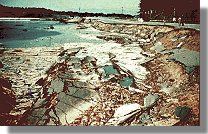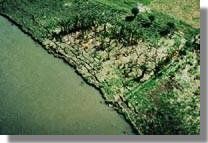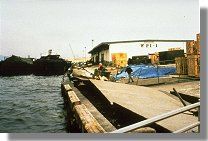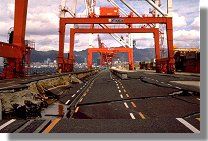
|

|
|
Locations |
||||
|
||||
|
Port and wharf facilities are often located in areas susceptible to liquefaction, and many have been damaged by liquefaction in past earthquakes. Most ports and wharves have major retaining structures, or quay walls, to allow large ships to moor adjacent to flat cargo handling areas. When the soil behind and/or beneath such a wall liquefies, the pressure it exerts on the wall can increase greatly - enough to cause the wall to slide and/or tilt toward the water. As illustrated below, liquefaction caused major damage to port facilities in Kobe, Japan in the 1995 Hyogo-ken Nanbu earthquake. |
||||
|
||||
|
|
|
|
Home
|
What
|
When
|
Where
|
Why
|
How
| | Research | Links | |







